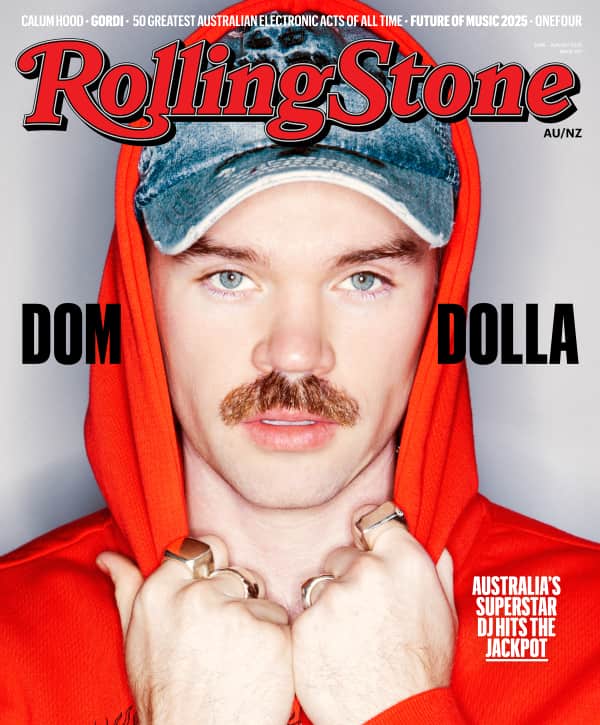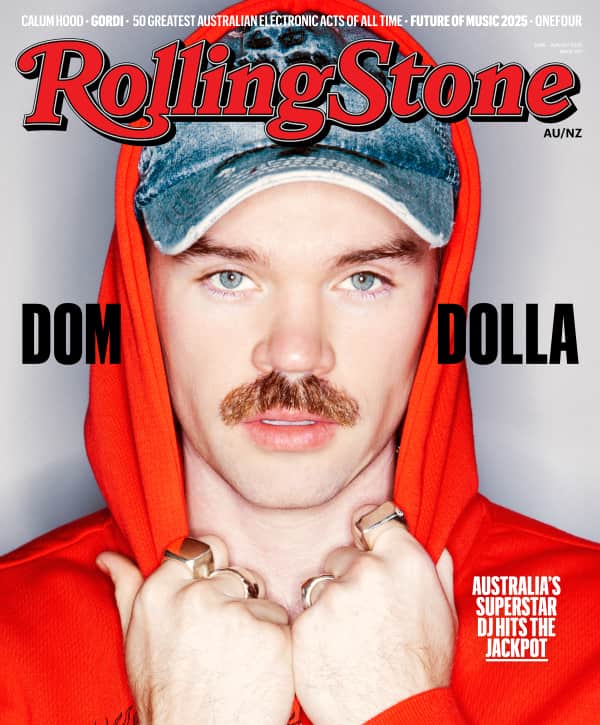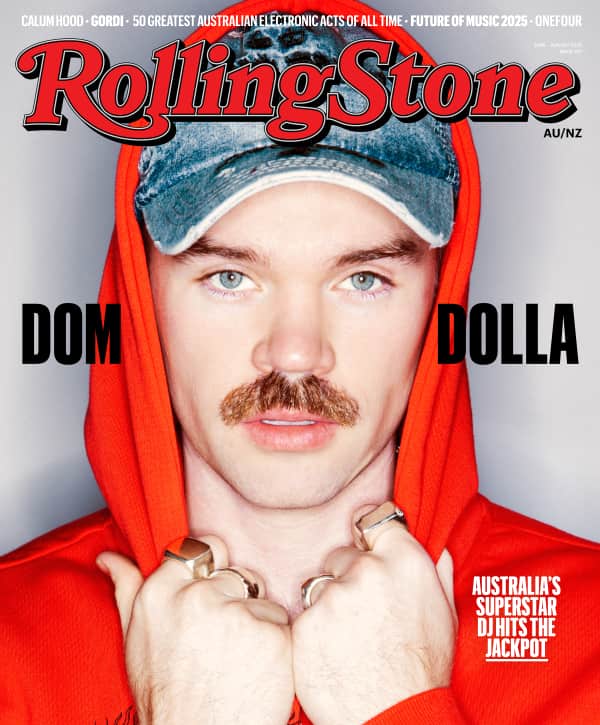Ozzy Osbourne, the singular metal legend whose Black Sabbath virtually invented heavy metal and in later years became a reality-TV pioneer, died on Tuesday at the age of 76.
Osbourne’s family confirmed his death in a statement. “It is with more sadness than mere words can convey that we have to report that our beloved Ozzy Osbourne has passed away this morning,” they said. “He was with his family and surrounded by love. We ask everyone to respect our family privacy at this time.”
An exact cause of death was not given, though Osbourne has battled an array of health issues over the past several years, including Parkinson’s disease and injuries he sustained from a late-night fall in 2019.
The singer had an electrifying and unpredictable onstage presence and a dry sense of humor that endeared him to hordes of adoring fans. His excitable energy helped transform the anthems he sang — “Iron Man,” “Paranoid,” and “Crazy Train” — from radio hits into sports-stadium staples. As a member of Black Sabbath, he helped draft the blueprints for heavy metal, but in conversation, he was always humble about his contributions to music. He knew his limitations and was open about his addictions, but he always attempted to better himself. He was an underdog everyone would want to rally behind.
As Black Sabbath’s doomsayer-in-chief, Osbourne could summon a true sense of terror in his keening cries in a way that heightened the band’s muscular dirges. When he bellowed “What is this that stands before me, figure in black which points at me?” in the song “Black Sabbath,” it was a performance worthy of a horror flick. He sang “Iron Man,” about a scorned golem seeking revenge, with believable wrath. And when he screeched, “Dreams turn to nightmares, heaven turns to hell,” in “Sabbath Bloody Sabbath,” it was with a demonic fury not even Milton could have summoned. He made sense of his bandmates’ heavy swagger and brought their supernatural racket back down to earth in a way that has resonated with millions for decades.
Although groups had been testing the limits of hard rock for a few years by the time Black Sabbath arrived, the band purified their aggression into a forceful, unrelenting sound that would define a new style of rock. “On any given day, the heavy-metal genre might as well be subtitled ‘Music derivative of Black Sabbath,’” Metallica drummer Lars Ulrich said, when inducting Black Sabbath into the Rock & Roll Hall of Fame in 2006. Osbourne’s voice and performances were crucial ingredients to the group’s modus operandi. Queen guitarist Brian May once described Osbourne as “a willowy singer wailing in a way that made the kids’ parents despair” — and that is exactly what the kids wanted in the music.
As a solo artist, Osbourne zeroed in on the more gothic aspects of Sabbath’s approach and tweaked the tempos so fans could graduate from head nodding to headbanging. But his art still reveled in darkness — mutually assured destruction (“Crazy Train”), Hammer Horror vignettes (“Bark at the Moon”), false prophets (“Miracle Man”). The big difference was that, as bandleader, Osbourne discovered a new side of himself — an entertainer whose sharp wit and lust for partying was just as outsized as his music — and let it overcome him. Aided by his wife and manager, Sharon, and a succession of six-string virtuosi — Randy Rhoads, Jake E. Lee, Zakk Wylde — he reinvented himself as a performer who could both preside over a séance and a kegger with equal panache. His legend grew.
Love Music?
Get your daily dose of everything happening in Australian/New Zealand music and globally.
Between his solo music and recordings with Black Sabbath, Osbourne was the most ubiquitous artist on Rolling Stone’s ranking of the Greatest Metal Albums of All Time; Sabbath’s Paranoid claimed the list’s top spot. He won four Grammys, including a Lifetime Achievement nod with Black Sabbath, and nearly all of his albums have been certified gold or platinum.
By the late Nineties, Osbourne was metal’s ringmaster, lending his name to the touring Ozzfest and headlining the annual touring festival either as a solo artist or with Sabbath. When it seemed like popular culture wanted to spurn heavy artists, he had created a haven for them to reach their audience directly at a one-stop event. He was once a misfit and, in turn, provided a gathering spot for misfits to find fit in.
But he eventually charmed the mainstream simply by being himself, a loving dad who couldn’t figure out his TV’s remote (like many dads across the country) on The Osbournes. The show even won an Emmy. Where he was once a jaw-dropping rock savage with an appetite for small, winged animals in the drunken Eighties, he was now America’s sweetheart. He was a rock & roll survivor who lived long enough to make it through to the other side.
“My life has just been unbelievable,” Osbourne once told Rolling Stone. “You couldn’t write my story; you couldn’t invent me.”
John Michael Osbourne, born in Birmingham, England on Dec. 3, 1948, was the fourth of six siblings in a working-class family. Their father, John Thomas “Jack” Osbourne, was a toolmaker who labored nights at an electronics factory. When Jack would come home in the morning, Ozzy’s mother, Lillian, would leave for her factory job for a company that worked in the motor and aerospace industries. Domestic violence was a common scene in the Osbourne household, and its effects weighed on Ozzy later in life.
By Ozzy’s estimate, the Osbournes lived right on the poverty line, somehow making ends meet week after week. The family did not attend church, though Ozzy recalled in his autobiography, I Am Ozzy, that he went to Sunday school “‘coz there was fuck-all else to do, and they gave you free tea and biscuits,” yet religion was present in his later art, as he wore a cross and sang lyrics that warned of hell — possibly the kind of perdition he had climbed out of in his youth. Craters left by bombs in World War II were frequent play sites for Ozzy when he was young.
Suffering from dyslexia and attention-deficit disorder, Osbourne struggled in school. He was an easy target on the playground and later recalled getting clobbered by future Sabbath guitarist Tony Iommi. “I always felt crappy and intimidated by everyone,” Osbourne reflected in Esquire. “So my whole thing was to act crazy and make people laugh so they wouldn’t jump on me.” Depression overtook him several times as a schoolkid, and he first attempted suicide at age 14, “just to see what it would feel like.”
But it was also that year that the heavens opened up for Osbourne the second he first heard the Beatles’ “She Loves You” for the first time. “It was a divine experience,” he told Esquire. “The planets changed.” But other than a new infatuation and a new calling in the back of his mind, not much else in his world shifted for the better. He dropped out of school at 15 and entered the workforce — attempting construction, learning toolmaking, tuning car horns, slaughtering cattle — but nothing stuck. He turned to crime by age 17 and spent two months in prison for burglary.
After Osbourne did his time, his father took pity and purchased a microphone, amplifier, and speakers, costing a princely £250, for him. The aspirant singer advertised his wares at a local music shop with a dubious ad — “OZZY ZIG NEEDS GIG – Experienced front man owns own PA system” — and attracted the interest of a young guitarist named Terence “Geezer” Butler, who played in an acid-rock band, similar to the groups Art and Tomorrow, called Rare Breed. After that group disintegrated, the pair linked up with the guitarist and drummer of another band, Mythology — Iommi and Bill Ward — in late 1968 and formed a sextet called the Polka Tulk Blues Band. After jettisoning two members, the band rechristened itself Earth and began playing blues, jazz, and covers of songs like “Knock on Wood” and “Blue Suede Shoes.” The band’s manager, Jim Simpson, once recalled that the band’s first-ever recording, “set to come out this summer for the first time,” included a rendition of Count Basie’s “Evenin’” partially because Osbourne was so enamored with singer Jimmy Rushing.
At one band rehearsal, Butler, who had switched to bass, told his bandmates about a nightmare he had had in which he felt a sinister presence next to him. The tale inspired Osbourne to sing “What is this that stands before me?” over the quiet part of a new song they were working on with crushing power chords. He summoned the words in a way that made Butler’s dread cling to the air. They stayed with that feeling and finished the tune, which they dubbed “Black Sabbath,” taking the title from a 1963 horror film. The song’s heavy new direction inspired more originals, custom written to scare audiences in a manner similar to fright flicks, and they ditched the Earth moniker in favor of Black Sabbath.
The quartet had found its new sound, but Osbourne had trouble fitting in. “He was insecure,” Simpson told Rolling Stone of Osbourne’s formative years, “and he needed an arm around his shoulders and to be comfortable — ‘It’ll be all right, don’t worry’ — because he was worried around his performances. He was very sensitive, very curious. But he gave everything onstage. He left nothing behind.” Osbourne and his bandmates found their mojo through heavy gigging, playing up to seven times a day for months on end in Switzerland and Germany. When working on originals, Osbourne would often improvise a melody and, if no words came to him, Butler would compose the lyrics. “The amazing thing about Oz was he could take Geezer’s lyrics and spit them out ‘Ozzy,’” Ward once said.
It was also around the time of these residencies when Osbourne began taking drugs regularly, smoking hash and taking acid. One possibly tall tale regarding the band was that he and Ward both took LSD every day for two years. Within a few years, cocaine would split the band wide open, but at the time, the slow-churning riffs of “War Pigs,” “The Wizard,” and “Behind the Wall of Sleep” established the group’s stoner-metal aesthetic.
The band recorded its self-titled debut at the tail end of 1969 in a two-day sprint on a shoestring budget of £600. Due to the tight turnaround, the musicians simply played their pub set, complete with extended guitar solos. Despite the rush, Osbourne commanded chilling performances on “Black Sabbath,” “N.I.B.,” and “Warning,” among other tracks, and the band’s raw, lumbering riffs cast the mold for heavy metal. Despite a lack of radio play, the LP shot to Number Eight on the U.K. chart.
About half a year later, Black Sabbath reconvened at the same studio to cut their second LP, which they hoped to call War Pigs, and recorded another set of instant classics: “Iron Man,” “Fairies Wear Boots,” “Paranoid.” The immediacy of the last track, coupled with devilish lyrics like “Make a joke and I will sigh, and you will laugh, and I will cry,” made it the album’s standout, and the group’s record label retitled the album Paranoid. The album shot to Number One in England, and “Paranoid,” a Number Four hit single, earned the band a slot on Top of the Pops.
The band’s U.S. record label delayed the releases of Black Sabbath and Paranoid, but both became commercial hits, and the RIAA has certified Paranoid four-times platinum. Fans loved them, but critics at the time hated them. Lester Bangs described Black Sabbath in Rolling Stone as “just like Cream! But worse,” and Nick Tosches didn’t bother even listening to Paranoid for his Rolling Stone review, referring to the singer as “Kip Treavor,” a mangled invocation of Kip Trevor, frontman for a Satanism-obsessed band called Black Widow. But Black Sabbath pressed forward undeterred. Osbourne tested his vocal limits on the band’s third album, 1971’s Master of Reality, screeching on “Lord of This World,” crooning on “Solitude,” and howling on the ode to marijuana, “Sweet Leaf,” and nuclear warning “Children of the Grave.”
Around this time, Osbourne married a woman he’d fallen for at first sight, Thelma Riley, when he saw her working the cloakroom of a pub. “They’re crazy mad in love,” Ward told Rolling Stone of the Osbournes’ relationship in Rolling Stone’s first Sabbath profile. “He really can’t stand being away from her.” The couple survived a turbulent decade for Ozzy, who later looked back on the relationship with regret after it fell apart. “I was a raving drug addict and an alcoholic and about as much good as an ashtray on a motorbike,” he told Esquire. “My father was abusive to my mum, and I would slap my first wife around because I thought that’s what men have to do.” The couple had two children, Jessica and Louis, and Ozzy adopted Thelma’s son from a previous relationship, Elliot. Osbourne later claimed to have a strained relationship with the children from his first marriage.
Black Sabbath decamped to Los Angeles to record 1972’s Vol. 4 and nursed fierce cocaine addictions while there. Osbourne crystalized his love for the drug with a passionate performance on the album’s “Snowblind,” but still managed to summon a more tender side on the plaintive “Changes.” He returned to banshee screaming on the title cut for 1973’s Sabbath Bloody Sabbath. Osbourne also stretched his wings beyond simply singing, keying the musical line to the album’s jaunty prog rocker “Who Are You?” on a synthesizer. No longer were Black Sabbath playing plodding, primitive heavy rockers; there was a new sophistication in the band’s music and Osbourne’s performances. After parting ways acrimoniously with then-manager Patrick Meehan, the group found new vitriol on 1975’s Sabotage, with Osbourne screeching about the betrayal on “The Writ” and existential pain on “Symptom of the Universe.” It was an artistic rebirth, but soon everything began to unravel.
Osbourne quit Black Sabbath in 1978, after touring in support of the previous year’s lackluster Technical Ecstasy. His drug abuse and drinking had gotten out of control to the point that he checked himself into an asylum to clean up and was taking stock of his life. He had also started considering life after Sabbath, as he’d already begun wearing a T-shirt emblazoned with the words “Blizzard of Oz,” an epithet he once described as his “coke name” that he’d hoped to call a solo band. More pressing was the fact that Osbourne’s father had just died of cancer, and he needed time to process the loss. The band recruited Savoy Brown and Fleetwood Mac vocalist Dave Walker for a couple of weeks but they ultimately coaxed Osbourne back for another album. Although they titled the LP Never Say Die!, the band would not last another year. Osbourne’s bandmates felt his substance abuse had stymied his creative contributions to the band and dismissed him in 1979.
“Firing me for being fucked up was hypocritical bullshit,” Osbourne wrote in I Am Ozzy. “We were all fucked up. If you’re stoned and I’m stoned, and you’re telling me that I’m fired because I’m stoned, how can that fucking be? Because I’m slightly more stoned than you are?”
Osbourne was 30 years old, jilted, and dejected. He resolved to spend what money he had left on a hotel room and booze so he could drink himself into oblivion. Then Sharon Arden, the daughter of Sabbath’s manager at the time, Don Arden, took pity on him and encouraged him to go solo. Within a year, he linked up with the flashy ex-Quiet Riot guitarist Randy Rhoads, Rainbow bassist Bob Daisley, and Uriah Heep drummer Lee Kerslake, and the band recorded Osbourne’s solo debut, 1980’s Blizzard of Ozz.
The music was faster paced and harder hitting than Black Sabbath’s, festooned with Rhoads’ neo-classical filigrees, and it fit in perfectly with the new generation of hard-rock bands inspired by Van Halen. Osbourne, too, sounded revitalized, singing passionately about the horrors of the Cold War on “Crazy Train,” occult mysticism on “Mr. Crowley,” and the personal carnage of alcoholism on “Suicide Solution.” He would tell his bandmates how excited he felt to be starting over and proving himself again to skeptical audiences. The hard work paid off, too. The album was a Top 10 hit in the U.K., and made it up to Number 21 in the U.S. The RIAA has since certified it five-times platinum.
Despite feeling rejuvenated, Osbourne continued to abuse alcohol and drugs to the point that his wild-man antics nearly overshadowed his art. In 1981, the year he separated from his wife Thelma, he shocked an L.A. conference room full of Columbia Records execs when he pulled a dove out of his pocket and bit its head off. A year later, while touring in support of his stellar second solo record, Diary of a Madman, he similarly decapitated a dead bat that a fan had thrown onstage, thinking it was a toy. Doctors treated him with rabies shots. A month later, San Antonio police arrested Osbourne ostensibly for urinating on the Alamo; Sharon had hidden his clothes from him so he wouldn’t go out drunk, and he put on one of her dresses and went out anyway, unaware of where he was relieving himself.
Spurred on by media sensationalism, the tour continued until March 19, 1982, when Rhoads died in a freak accident. On a Florida off-date, the guitarist, who was afraid to fly, agreed to get in a private plane with the tour bus driver, who was also a pilot. The plane attempted to buzz the bus, clipped the wing, and spun out of control. It crashed into a house and instantly killed Rhoads, makeup artist Rachel Youngblood, and the bus driver. Osbourne was in shock.
“If it wasn’t for Sharon, I’d still be in that fucking field, looking at the house as it was burning,” he remembered in Rolling Stone years later. “It was a bad scene, man. She said, ‘We are not stopping now.’”
The tour resumed in April with former Gillan guitarist Bernie Tormé accompanying Osbourne for a week and a half of dates before Night Ranger guitarist Brad Gillis stepped in to finish out the tour. Originally, Osbourne had planned on releasing a live album to finish his contract with manager Don Arden but changed his mind after Rhoads’ death. Instead, he recorded a double LP of Sabbath songs, dubbed Speak of the Devil, with the Gillis lineup to compete with his former band’s Live Evil release, which featured Osbourne’s replacement, Ronnie James Dio. It sold better than Sabbath’s. In 1987, Osbourne released a stunning live album that featured Rhoads, Tribute, which he co-billed to the guitarist.
In the midst of turmoil, Osbourne married Sharon on July 4, 1982. Their first daughter, Aimee, was born in 1983, a second, Kelly, was born the following year, and son Jack arrived in 1985. Sharon continued to manage Osbourne’s career until his death. The family kept residences in England and Los Angeles.
Osbourne released his third solo LP, Bark at the Moon, in 1983, and it featured another young, showy guitarist, Jake E. Lee, who had previously played with Ratt and Dio, and a harder-edged sound. Other than a one-off Black Sabbath reunion for Live Aid in 1985, Osbourne stayed the course throughout the rest of the Eighties, putting out one hit album after another, eventually recruiting another hotshot guitarist, Zakk Wylde, in 1987. Osbourne’s four-times platinum 1991 album, No More Tears, was his biggest hit since Blizzard of Ozz, thanks to strong singles like “Mama, I’m Coming Home,” “Road to Nowhere,” and the Grammy-winning “I Don’t Want to Change the World” — all set-list staples until his death.
Still, controversy stalked Osbourne. In 1985, the parents of a teen who died by suicide sued Osbourne and his record label, alleging the song “Suicide Solution” had convinced him to do it. The case was thrown out of court. Before the decade was up, the parents of two other teens attempted to file similar suits, but Osbourne prevailed legally. “If I was going to put some backward message in a record, I’d put in something like, ‘This is the Devil! Buy six more copies of this record,’” Osbourne joked in Spin in 1986, before adding, “‘Six hundred and sixty-six more!’”
The headlines made him a demon to evangelicals. He later appeared in the movie Trick or Treat, portraying a preacher ironically as a dig at the religious leaders who had railed against him. A year later, he paid several thousand dollars in fines after his fans trashed the Meadowlands Arena in 1986. He also entered the Betty Ford Clinic that year in an attempt to clean up his addictions but ultimately failed.
In 1989, shortly after he’d played a triumphant concert with Sabbath’s Geezer Butler playing bass in his solo band for the Moscow Music Peace Festival, he woke one day in a jail cell. A policeman then charged him with the attempted murder of his wife. In a blackout state, Osbourne had lunged at Sharon and tried to strangle her. “We’ve made a decision, and you’ve got to die,” he told her. She escaped his grip, and after he spent time in jail, she eventually dropped the charges. When a reporter asked her how close he came to killing her years later, Sharon said, “Pretty damn close.”
Osbourne got his drinking under control for a few years, and Sharon spent the Nineties raising his profile. After a well-publicized retirement tour (dubbed No More Tours), triggered after Osbourne developed a tremor that doctors warned could be multiple sclerosis (MS), and a brief Sabbath reunion at the final show, he waited four years before venturing back on the road for his Retirement Sucks Tour. By then, he’d found medication that helped his condition, which was not MS but a disease in the same family as Parkinson’s, and he was determined to keep going.
After the alternative-rock fest Lollapalooza rejected Osbourne as a performer, Sharon assembled the first Ozzfest lineup in 1996, with Slayer, Danzig, and Neurosis, among others, supporting Ozzy. Black Sabbath reunited for Ozzfest ’97, and a live recording of “Iron Man” from their Reunion record earned them a Grammy.
Over the years, Osbourne’s tours had introduced metal fans to Metallica, Mötley Crüe, Korn, and several other heavy hitters, so when Ozzfest became an international, annual touring event, it became the most desired touring gig for heavy bands. Toward the late Nineties, the festival rode a crest of popularity with the burgeoning nu-metal scene, whose bands treated Osbourne like a deity.
Then came The Osbournes, and Ozzy officially became the foul-mouthed Prince of Bleeping Darkness. The reality-TV show presented Ozzy, Sharon, Kelly, and Jack as a lovingly dysfunctional family (Aimee opted out of the show), and it became a ratings blockbuster. Suddenly, the softer side of Ozzy Osbourne — depicted as a sailor-cursing, befuddled dad — made him the darling of Midwestern moms. “I’m not a musician,” he once said. “I’m a ham.” But his hamminess made him a superstar, and the show became the paradigm for later programs like Keeping Up With the Kardashians.
Suddenly, Osbourne had a table at the 2002 White House Correspondents’ Dinner (“Ozzy, Mom loves your stuff,” President George W. Bush joked) and performing at the Queen’s Golden Jubilee. Osbourne also received a star on Hollywood’s Walk of Fame in 2002.
Osbourne faced more controversy in 2002 when he allowed his contemporary band members, bassist Robert Trujillo and drummer Mike Bordin, to replace the rhythm tracks on Blizzard of Ozz and Diary of a Madman as a workaround for a dispute over royalties with the original musicians; he restored the originals in 2011. And in 2004, he narrowly survived a quad-bike wreck that sent him into the ICU with several broken bones. But within a year, he had come out with a new box set, Prince of Darkness, and was back on the road.
Osbourne spent his later life touring and recording solo and with Black Sabbath. The latter band released 13 in 2013, its first LP with Ozzy behind the mic since Never Say Die! It went to Number One album on both sides of the Atlantic. Shortly after the album was a hit, Osbourne cleaned up his act for good and told reporters he maintained sobriety until his death.
The group embarked on a farewell tour that ended in 2017, after which Osbourne announced his own final world tour (No More Tours 2), but he did not get far into it before it started to fall apart. First, a staph infection forced him to cancel several dates and then a late-night tumble sent him into a hospital for surgery that forced him to be bedridden for months. He revealed a diagnosis of Parkinson’s disease in 2020 and resolved to carry on. That year, he released a solo album, Ordinary Man, that found him playing alongside an impressive guest list — Elton John, Post Malone, Slash — but a combination of his injuries and the coronavirus pandemic kept him off the road. As of 2021, he was working on a new album with producer Andrew Watt that would feature a similar guest list.
On July 5, 2025, Osbourne gave his final performances both as a solo artist and with the original members of Black Sabbath at Villa Park in his hometown of Birmingham. For weeks prior to the Back to the Beginning benefit concert, the city celebrated its most famous sons’ homecoming and the lauded sold-out concert drew fans from around the world to witness the heavy-metal royalty take their final bow.
Their “opening acts” — an all-star crew that included Metallica, Guns N’ Roses, Slayer, Pantera, Alice in Chains, and more — paid tribute with Sabbath covers. Osbourne performed “I Don’t Know,” “Mr. Crowley,” “Suicide Solution,” “Mama, I’m Coming Home,” and “Crazy Train.” Following his solo set, he was joined by Iommi, Butler, and Ward to perform “War Pigs,” “N.I.B.,” “Iron Man,” and “Paranoid.”
Outside of music, Osbourne had cameos in several films and TV shows including The Jerky Boys (1995), Private Parts (1997), South Park (1998), Little Nicky (2000), Austin Powers in Goldmember (2002), Ghostbusters (2016), and The Conners (2020), among several others. In 2009, Fox attempted an Osbournes reboot, dubbed Osbournes Reloaded, but it failed to catch on. Osbourne later co-starred in a reality show with his son, Ozzy & Jack’s World Detour, in which the two road-tripped around the United States, and The Osbournes Want to Believe, in which he, Sharon, and Jack weighed in on found-footage paranormal videos.
In 2010, he released I Am Ozzy and followed the book up the next year with Trust Me, I’m Dr. Ozzy, a compendium of his Rolling Stone advice column. He was inducted into the Rock & Roll Hall of Fame in 2006 as a member of Black Sabbath and received a Lifetime Achievement Award with the band from the Grammys in 2019. He was nominated for eight other Grammys, both as a solo artist and with Black Sabbath, and won three of them.
But awards never meant as much to him as applause from an audience. Up until his death, before the Back to the Beginning concert, Osbourne’s goal was to ascend a stage one last time and thrill his fans. When retirement came up in a 2020 Rolling Stone interview, Osbourne huffed. “Retire from what?” he said. “It’s not a job. How can you retire from a rock band? It’s like saying, ‘Don’t plug in your amp.’ I don’t know anything else. I’ll retire when they put the fucking nail in the lid.”
From Rolling Stone US



































